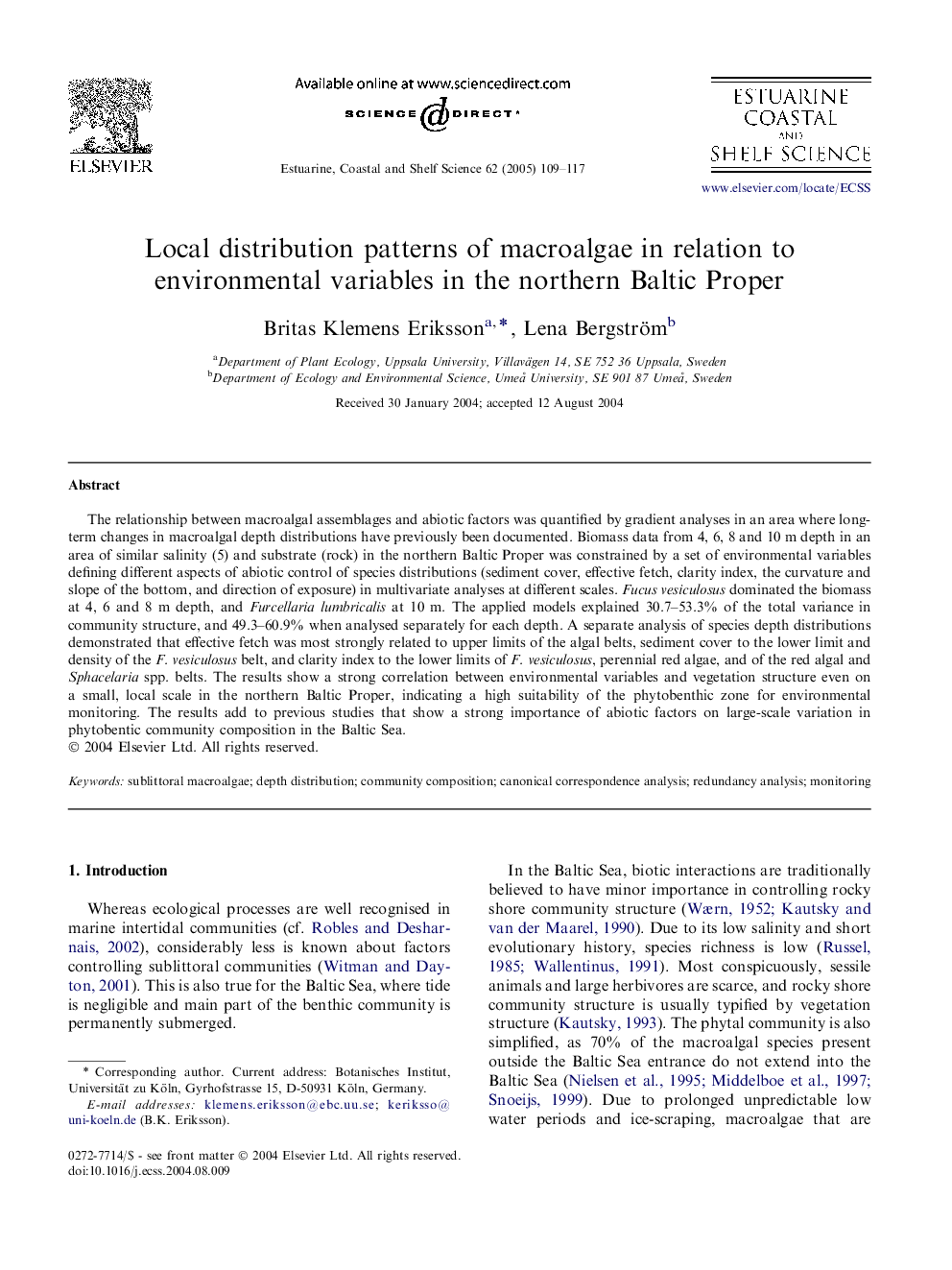| Article ID | Journal | Published Year | Pages | File Type |
|---|---|---|---|---|
| 9480609 | Estuarine, Coastal and Shelf Science | 2005 | 9 Pages |
Abstract
The relationship between macroalgal assemblages and abiotic factors was quantified by gradient analyses in an area where long-term changes in macroalgal depth distributions have previously been documented. Biomass data from 4, 6, 8 and 10 m depth in an area of similar salinity (5) and substrate (rock) in the northern Baltic Proper was constrained by a set of environmental variables defining different aspects of abiotic control of species distributions (sediment cover, effective fetch, clarity index, the curvature and slope of the bottom, and direction of exposure) in multivariate analyses at different scales. Fucus vesiculosus dominated the biomass at 4, 6 and 8 m depth, and Furcellaria lumbricalis at 10 m. The applied models explained 30.7-53.3% of the total variance in community structure, and 49.3-60.9% when analysed separately for each depth. A separate analysis of species depth distributions demonstrated that effective fetch was most strongly related to upper limits of the algal belts, sediment cover to the lower limit and density of the F. vesiculosus belt, and clarity index to the lower limits of F. vesiculosus, perennial red algae, and of the red algal and Sphacelaria spp. belts. The results show a strong correlation between environmental variables and vegetation structure even on a small, local scale in the northern Baltic Proper, indicating a high suitability of the phytobenthic zone for environmental monitoring. The results add to previous studies that show a strong importance of abiotic factors on large-scale variation in phytobentic community composition in the Baltic Sea.
Keywords
Related Topics
Physical Sciences and Engineering
Earth and Planetary Sciences
Geology
Authors
Britas Klemens Eriksson, Lena Bergström,
